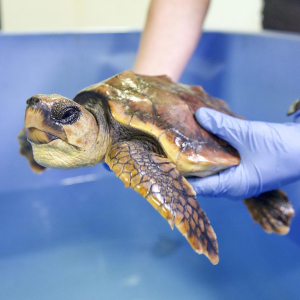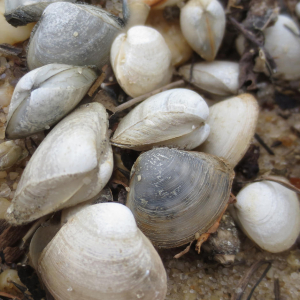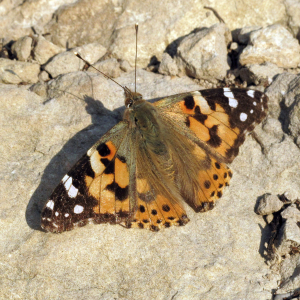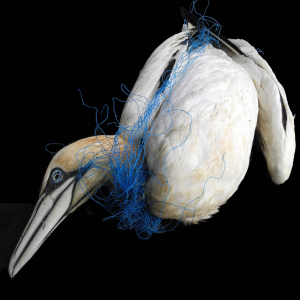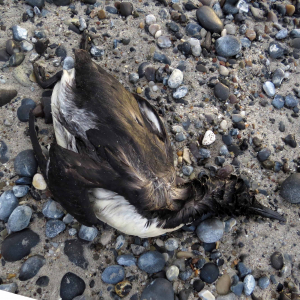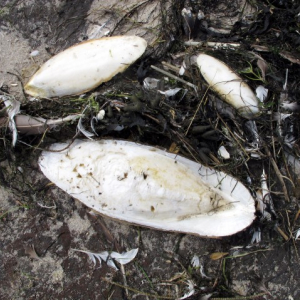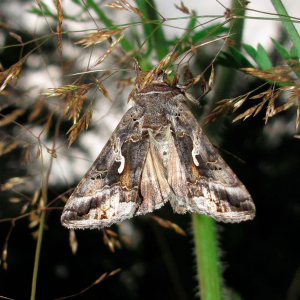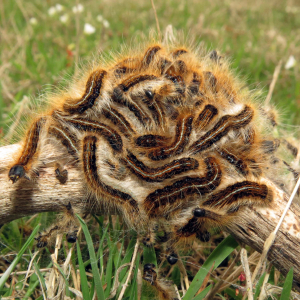
News
At the northern end of the Waddensea in Blåvand (DK) a live sea turtle stranded on 4th of january 2020. It was a young specimen of the Loggerhead (Caretta caretta), the most widespread sea turtle species. The stranded individual weighed hardly two kilograms and was too weak to get back into sea against the turf. It was transfered to Denmarks largest public aquarium "Den Blå Planet" near Kopenhagen. Sea tutles reach the Northsea very seldom as they can survive only in tropical or subtropical waters. It is a typical seasonal phenomenon around new year that the Northsea temperature sinks so low that stray specimen of subtropical marine species are washed ashore dead or overcooled.
A new bivalve is colonizing the Waddensea. In 2017 the american Dwarf surfclam (Mulinia lateralis) was first detected near Rotterdam. Already in 2018 it had reached the Ems estuary near Greetsiel and will probably colonize the complete Waddensea in a flash. The species looks like the cut trough shell from the Northsea but has a fine sharp edge on its surface and lives in the intertidal. Here it will probably compete against cockles and tellins for plancton and space. On the other hand the new specis may serve as good food for waders and gulls. The surfclam can reproduce already in it's first year at a size of three millimeters - precondition for a classic invasion. Obviously the safety measures for transatlantic shipping are still not sufficient to prevent import of "aliens" - a severe deficit!
Seit Anfang Juni flattern Tausende von Distelfaltern durch Norddeutschland und sind teils zahlreich auf den Inseln zu beobachten. Sie stammen aus Griechenland und sind die Kinder von Distelfaltern, die dank eines feuchten Winters Mitte März in Saudi-Arabien geschlüpft sind. Distelfalter wandern alljährlich mit dem Sommer von Nordafrika nach Norden und im Herbst in der Enkel- oder Urenkelgeneration wieder zurück. Sie überwinden Gebirge und Meere, wobei der einzelne Falter bis zu 3000 Kilometer Strecke schafft. Aus den Eiern der soeben bei uns eingetroffenen Falter werden Mitte Juli die Enkel der saudischen Frühlingsfalter schlüpfen. Je nach Wetter zeugen sie bei uns eine neue Generation oder machen sich direkt wieder auf den Rückweg nach Süden. Distelfalter sind schon am Nordkap und auf Island angetroffen worden, die Art schafft also - verteilt auf vier Generationen - bis zu 15.000 Kilometer Flugstrecke pro Jahr.
In anscheinend erhöhter Zahl werden seit Anfang Mai tote Basstölpel an die Strände des Wattenmeeres gespült. Die Todesursache ist noch unklar, aber es handelt sich offenbar nicht um die sonst beim Tölpel leider oft zu beobachtende Verstrickung in Seilreste. Tölpel sind Stoßtaucher und verwickeln sich oft mit dem Schnabel in Schnüren und Seilresten, die sie möglicherweise aus der Luft für Beute halten und danach stoßen. Außer am Schnabel sind sie oft auch an Kopf und Hals mit unzerreißbaren Plastikfäden verstrickt und kommen dann verhungert an die Strände.
Auf Helgoland, wo sich seit 1992 eine wachsende Brutkolonie von Basstölpeln befindet, verbauen die Vögel oft Plastikschnüre in ihren Nestern im Vogelfelsen. Benachbart brütende Lummen und auch die Tölpel selbst strangulieren sich oft an den Schnüren, die überwiegend von Fischnetzen stammen.
Alle tot gefundenen Tölpel sollen bitte gemeldet werden!
Treffen der Springschwänze
4. Mar: Eine merkwürdige Erscheinung...
Eine merkwürdige Erscheinung im Vorfrühling sind Massenvokommen winziger schwarzer Tierchen im Dünensand. Es handelt sich hierbei um Wasserspringschwänze, das sind etwa einen Millimeter lange Tierchen aus der Gruppe der Urinsekten. Die winzigen Wesen bilden am Rand von Dünentümpeln oder auch in Mulden im lockeren Dünensand riesige Ansammlungen aus vielen Tausend Exemplaren. Man vermutet, dass dieses Verhalten der Fortpflanzung dient, aber bewiesen ist das nicht. Springschwänze fressen kleine Bodenpartikel und Algen und dienen als begehrtes Futter für viele kleine Raubinsekten. Am Körperende haben Springschwänze eine zweispitzige Gabel, die nach vorne unter den Bauch geklappt und dort eingerastet ist. Wenn sie es eilig haben, schlagen sie diese Gabel so kräftig gegen den Untergrund, dass sie hoch in die Luft geschnellt werden. Das Gehüpfe ist auch in den Versammlungen deutlich zu sehen.
Since mid january a growing number of dead Common guillemots is washed ashore along the Waddensea coast. All observations should please be recorded via BeachExplorer! This applies to live guillemots near the shore as well. Guillemots near shore are unusual as the species hibernates on open sea. The dead birds washed ashore - sometimes 30 of them per island - seemingly exhibit no outer pollution with oil or other substances. Bad weather or lack of food are at present improbable causes of death and epidemics usually do not spread on open sea. The Institute for Wildlife Research (ITAW Büsum) examines the guillemots to identify the cause of deaths. Conservation centres and Nationalpark administrations organize the sampling of dead guillemots along the coast.
Some owners of pet birds are surprised to find oval white chalk plates washed ashore as they know them from pet shops where they are sold as supplementary bird food. The plates are backbones of cuttlefish. Cuttlefishbones stay adrift for months and reach the Waddensea originating from France or England. Seabirds like pecking the cuttlefishbones and leave their bill marks on them. Usually the bones stem from the Common cuttlefish which may reach 40 cms in size. Smaller backbones may be from rarer southern cuttlefish species. Living cuttlefish are hardly ever found in the Waddensea, the reason is unclear.
A hovering moth resembling a hummingbird and rushing from flower to flower is the Silver Y. This medium sized grey moth belongs to the large family of owlet moths and bears a Y-shaped mark on each forewing. The Silver Y is active at day and night and can be seen everywhere at the moment. The species winters in southern Europe and flies northward in spring, sometimes up to Iceland. The hungry caterpillars eat everything green (except politicians) and can develop in two generations until autumn. Then up to four times the number of moths that came in spring fly southward again for hibernation. Like the migratory birds the Silver Y is an eternal wanderer.
A furry bunch of brown hairy caterpillars is a typical find in coastal saltmarshes at the end of may. These are the caterpillar nests of the thermophilic Ground lackey moth. Only about 20 years ago this specis has reached the Waddensea coast - possibly arriving from english salt marshes. The caterpillars spend their first weeks sociably on a commonly spun silk carpet. They feed on different herbs like Sea aster, Sea arrowgrass or Sea plantain. The older caterpillars live individually and tend to develop blueish markings. The adult moths fly in july and leave egg clusters on plant stalks, from which new caterpillars hatch in next spring.




